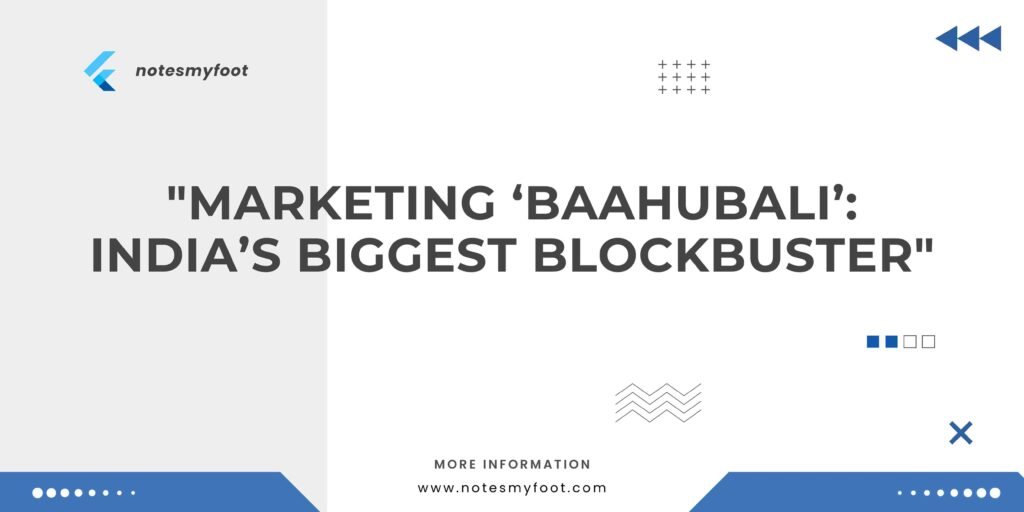
"Marketing ‘Baahubali’: India’s Biggest Blockbuster"
Baahubali – India’s Biggest Blockbuster, undoubtedly one of the biggest blockbusters in Indian cinema history, captivated audiences with its grandeur, gripping storyline, and visually stunning effects. However, behind its immense success lies a carefully crafted marketing strategy that played a pivotal role in its triumph. In this blog post, we will delve into the promotional strategies employed for Baahubali, analyze the factors that led to its unprecedented success, and explore the changing landscape of film promotions in the era of social media.
Background Note:
Before we embark on our journey to uncover the marketing prowess behind Baahubali – India’s Biggest Blockbuster, it’s essential to understand the context in which this magnum opus was created. Baahubali was a two-part epic fantasy film directed by S.S. Rajamouli, with a massive budget and an ambitious vision. The film boasted an ensemble cast, breathtaking visuals, and a storyline that left audiences eagerly awaiting the release of its second installment. With such high stakes, the marketing team had to ensure that Baahubali reached every nook and corner of the country, generating immense buzz and anticipation.
Marketing:
The producers of Baahubali left no stone unturned when it came to marketing their magnum opus. They adopted a multi-faceted approach that encompassed traditional marketing techniques as well as leveraging the power of social media. The film’s marketing campaign began months before its release, creating a sense of curiosity and intrigue among the audience. From visually stunning posters to captivating teasers and trailers, every element was meticulously crafted to pique interest and build anticipation.
Distribution:
While marketing played a crucial role in building anticipation, the distribution strategy was equally vital in ensuring the film’s success. Baahubali – India’s Biggest Blockbuster was released in multiple languages simultaneously, catering to a diverse audience. The film was not confined to the traditional Hindi film market but also expanded its reach to regional markets, tapping into the immense potential of the South Indian film industry. This strategic approach allowed Baahubali to transcend language barriers and capture the attention of a wider audience.
Results:
The marketing and distribution efforts for Baahubali yielded remarkable results. The film broke numerous box office records and became a cultural phenomenon. It not only garnered massive opening weekend collections but also sustained its momentum, enjoying a prolonged run at the box office. Baahubali’s success can be attributed to its well-planned marketing campaign, which created a frenzy among audiences, resulting in packed theaters and widespread acclaim.
The Road Ahead:
The success of Baahubali opened doors for new possibilities in film marketing. It showcased the potential of regional cinema to captivate a pan-Indian audience and highlighted the importance of a comprehensive marketing strategy. As the film industry continues to evolve, film promoters can draw inspiration from the strategic brilliance behind Baahubali and explore innovative ways to ensure good openings and longer shelf life for their films.
Conclusion:
Baahubali’s journey from an ambitious project to a nationwide phenomenon serves as a testament to the power of effective marketing and distribution strategies. By analyzing the promotional techniques employed for Baahubali, we have gained insights into the factors that contributed to its monumental success. As the film industry continues to evolve, it is crucial for filmmakers and promoters to adapt to changing trends and leverage the potential of social media and regional markets. Baahubali revolutionized the way films are marketed in India and left an indelible mark on the industry, setting new benchmarks for success. Also check out Zara’s Logo Redesign: A Bold Step into the Future?
